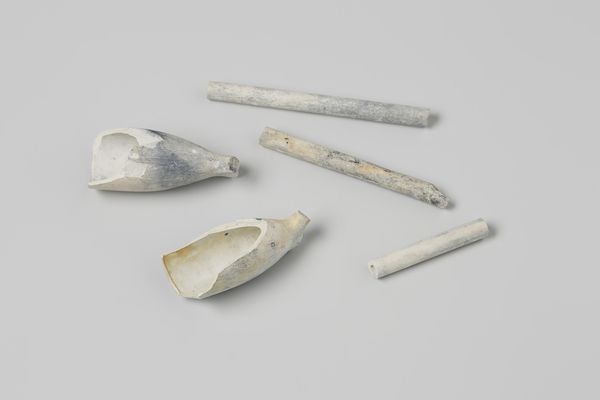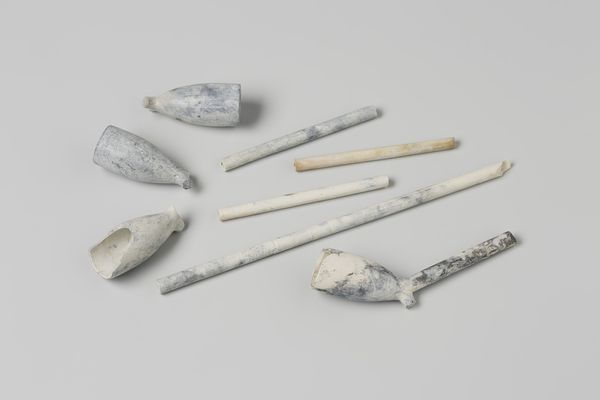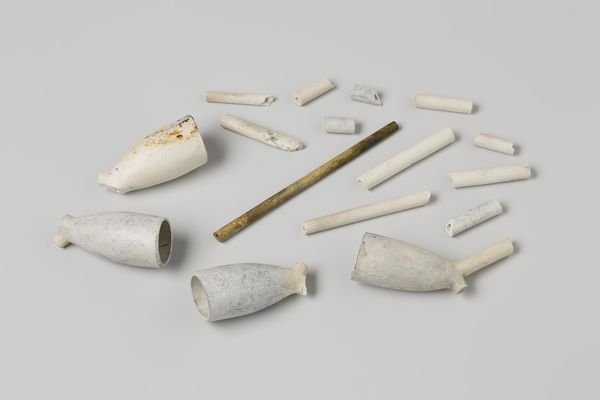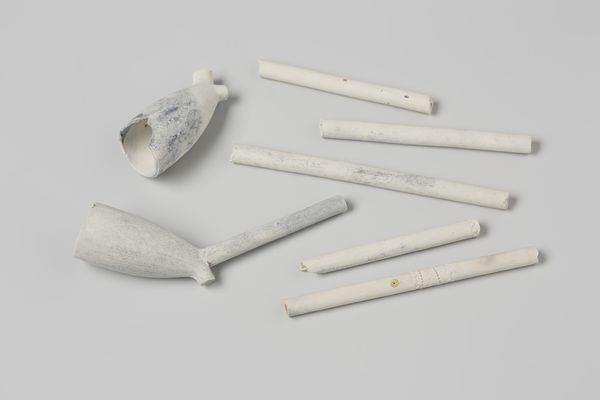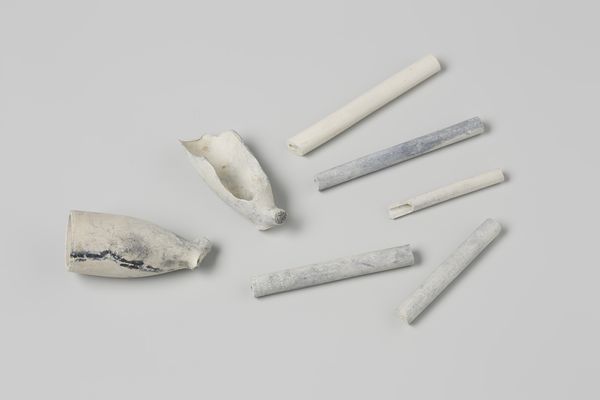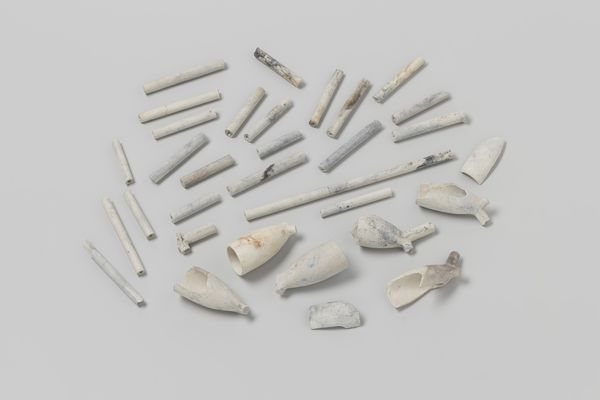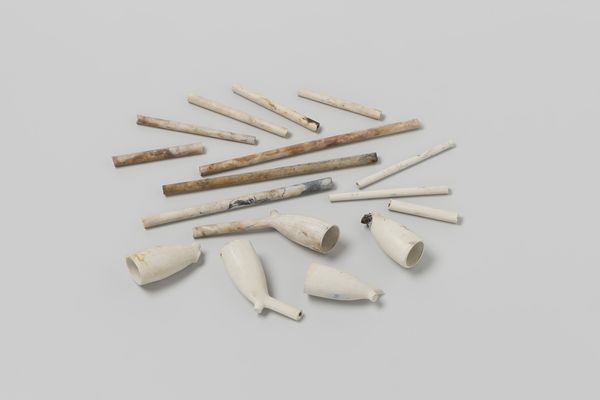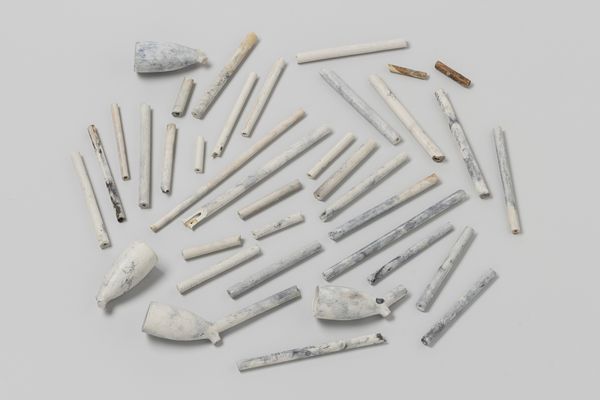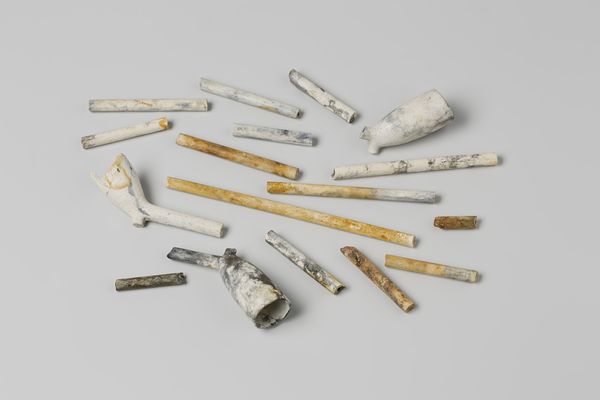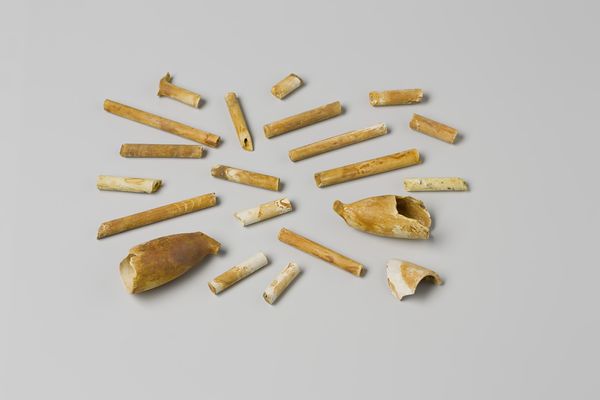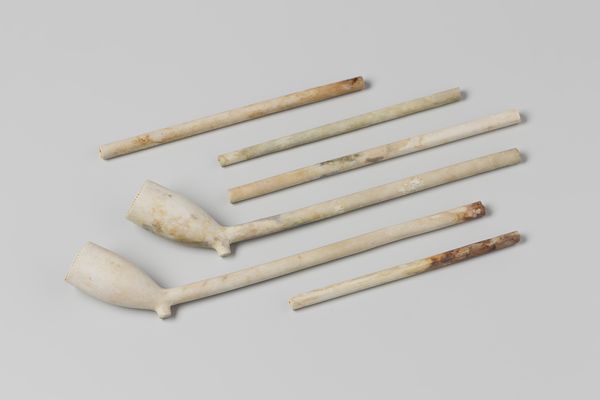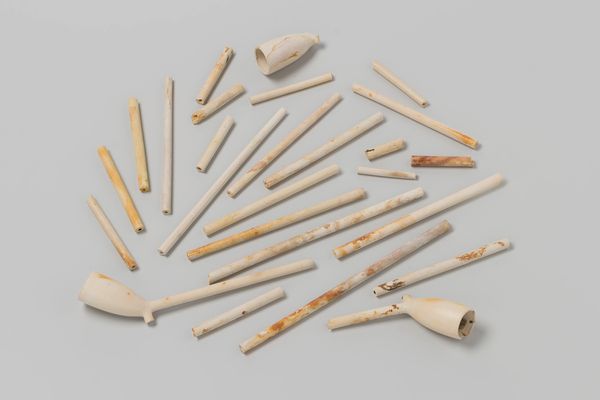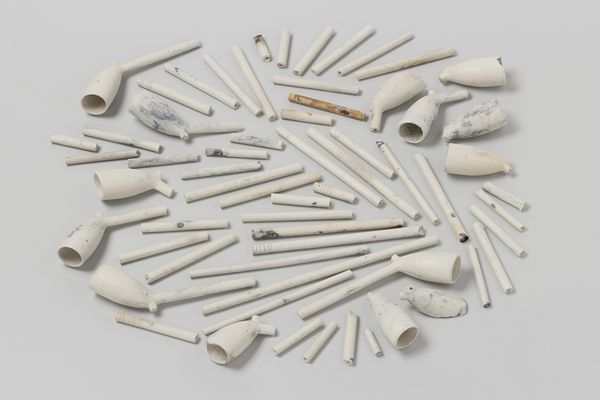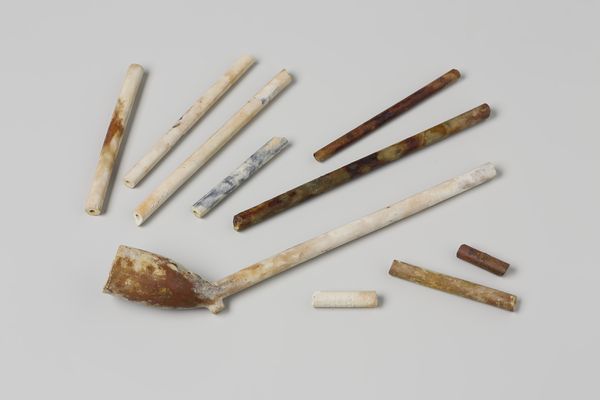
Fragmenten van pijpenkoppen en pijpenstelen uit het wrak van de Oost-Indiëvaarder 't Vliegend Hart Possibly 1720 - 1735
0:00
0:00
ceramic, earthenware
#
dutch-golden-age
#
ceramic
#
earthenware
#
ceramic
Dimensions: length 7.3 cm, width 1.8 cm, depth 3.7 cm, length 2.6 cm, diameter 0.6 cm
Copyright: Rijks Museum: Open Domain
Curator: What are your first thoughts on seeing these fragments of clay pipes? Editor: The composition is interesting, with these remnants arranged almost like an archeological find laid bare. There’s a quiet melancholy to the shapes. Curator: These are fragments of pipe bowls and stems retrieved from the wreckage of the Dutch East India Company ship, the 't Vliegend Hart. They possibly date back to between 1720 and 1735. Editor: The sheer number of clay pipes that must have been manufactured and consumed to leave behind even these remnants... It speaks to a specific kind of mass production and popular consumption during the Dutch Golden Age. What was the clay sourcing like, the methods of firing, and how were the workers involved in making these everyday objects viewed in society? Curator: A keen materialist perspective indeed. If we consider the object in isolation, notice how the light reflects off the glazed surfaces, subtly grading in intensity. It calls attention to the formal elements – line, shape, and texture – even in ruin. And the chromatic scale is severely limited to monochrome. The object speaks, almost in whispers, without resorting to garish affectations of colour or decoration. Editor: True, their stark white palette is arresting. The uniformity belies a more complex relationship between human consumption, trade networks, and even global power dynamics. Thinking about where and how these pipes were used during transoceanic voyages can offer another perspective. Curator: I concur. Their present arrangement also serves an aesthetic purpose – a silent discourse with form itself. Perhaps we shouldn't shy from attributing value even when divorced from their intended use. Editor: Indeed, in seeing how something quotidian and historically situated, like a broken pipe, informs perspectives about craft, globalization, and even fine art, it helps reconsider how we connect past, present, and even future human relations. Curator: I appreciate the nuanced considerations that lie outside the framework of aesthetics – adding a deeper layer to what may initially appear, perhaps superficially, to be visual order or design choices. Thank you for helping bring this object into focus, together.
Comments
No comments
Be the first to comment and join the conversation on the ultimate creative platform.
